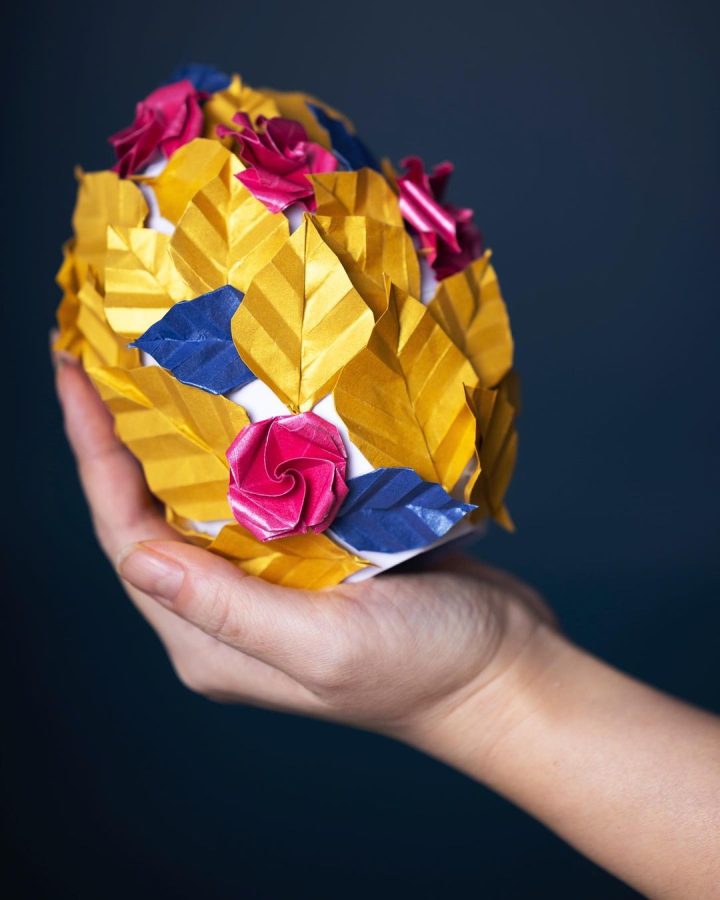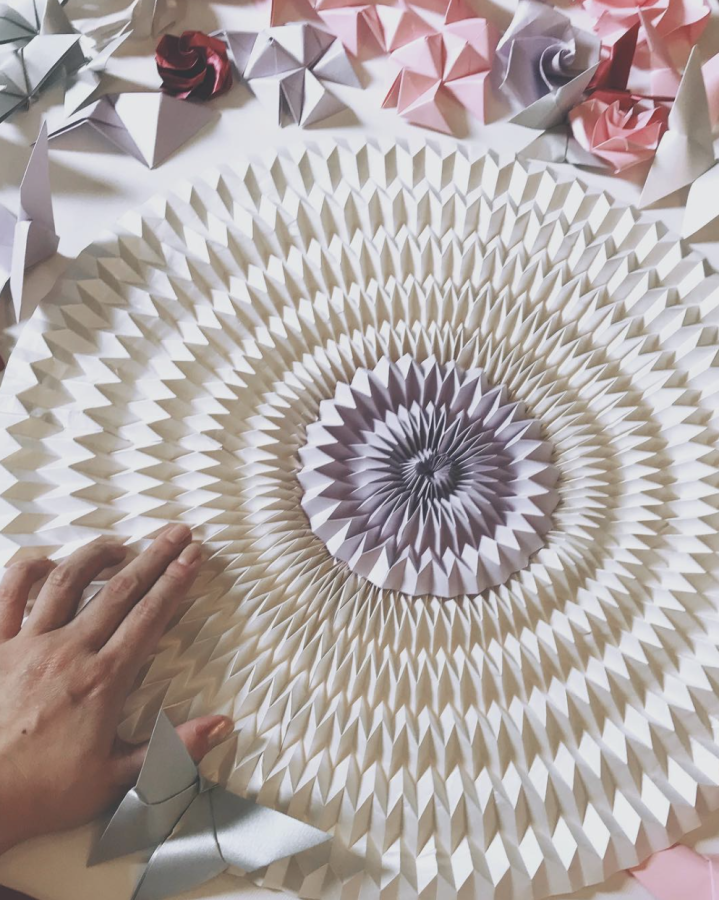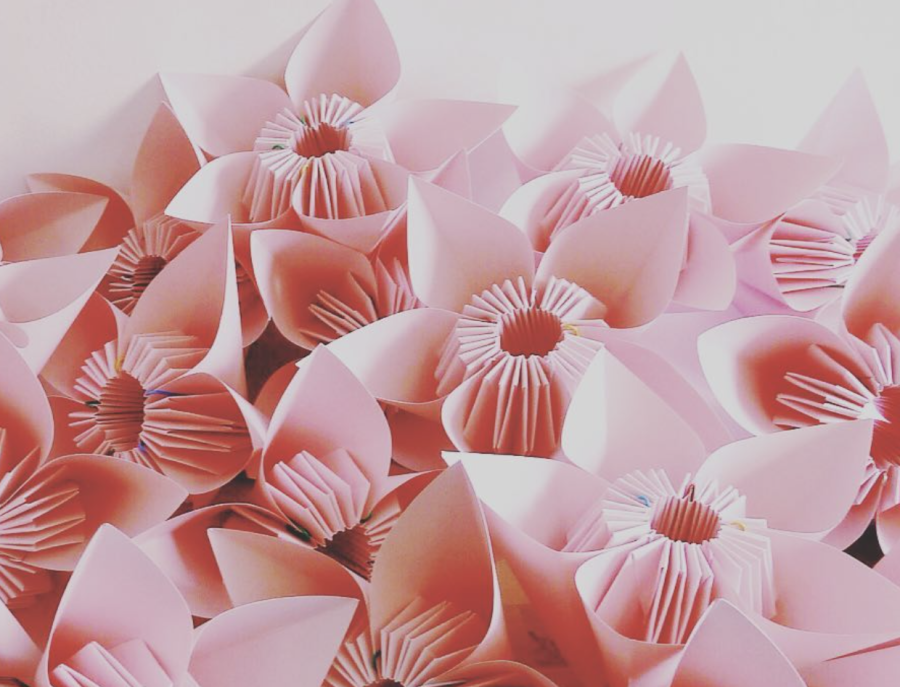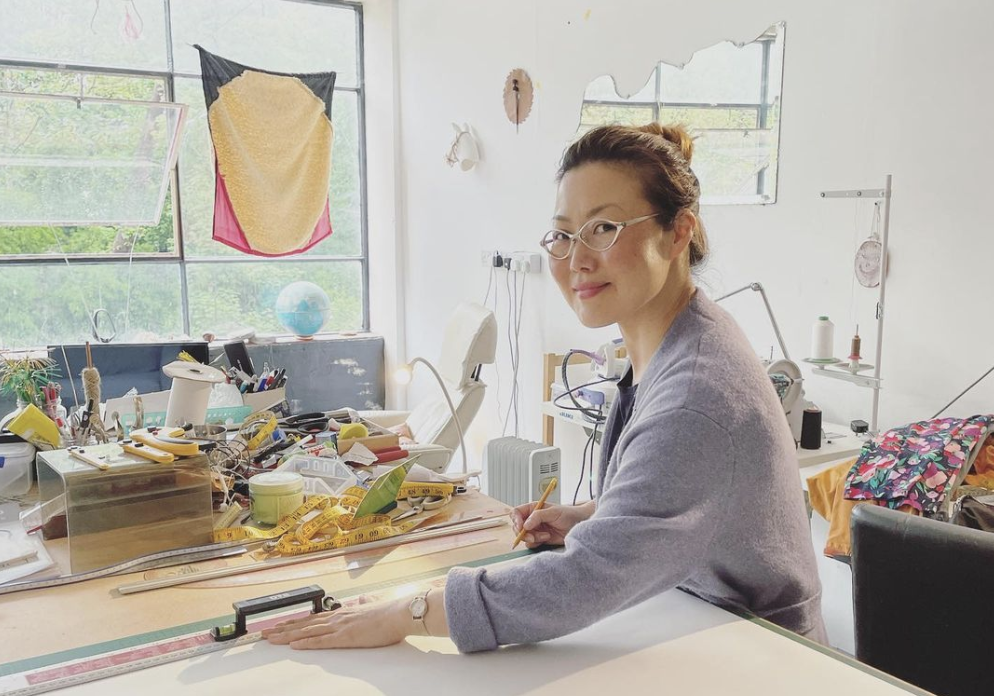Origami artist Coco Sato is best known for translating traditional Japanese aesthetics into art forms with a uniquely modern edge. Using paper, fabric, food or simple electronics, she creates artworks and public origami installations that celebrate people, play and adventure. She will be running free workshops teaching the basics of origami paper-folding techniques at Japan Week 2022, including how to create flowers, shapes, and animals. She will also demonstrate one of the dexterity tests that Lexus craftspeople are required to pass to work in a Lexus factory, in which they must fold an origami cat in less than one minute, using their non-dominant hand.
Ahead of Japan Week 2022, we caught up with award-winning UK based Japanese origami artist, Coco Sato, to learn more about the art of paper folding.

What is origami?
Origami is derived from two Japanese words, Ori (folded) and Kami (paper) and is an art of paper folding. It originated in ancient China. Japanese origami began sometime after Buddhist monks from China carried paper to Japan during the 6th century.
As a way to show respect and convey their feelings, rich people back in the days used paper to send letters to their loved ones and started folding the paper into different shapes like flowers inspired from everyday life. It’s a really old craft and it became a playful form of art around 17th century when paper became easy to manufacture. Origami revolves around paper and it really dates back to when the paper became accessible and the art of giving gifts as well. It incorporates the traditional form of Japanese philosophy and culture to show respect through the item you’re sending. It’s so intricate that it makes a fantastic gift. Origami’s origin used to be called Origata – a traditional Japanese etiquette for giving gifts wrapped in Japanese paper. Origami starts with one small fold in a piece of paper – where it ends is up to you!

How did you start origami? How long have you been creating origami for?
I started making Giant Origami while teaching a children’s art class in 2009 when origami wasn’t very popular. Traditionally, origami are made very small so you need to get very close to appreciate what they are and how they are made. During the art class, what I demonstrated needed to be easily seen from a distance, and I realised that the giant origami had a great visual impact.
I have a degree in fine art and wanted to use my background in art with my son. I took origami to festivals and from there it just snowballed – everybody just loved it because paper is so accessible. For origami, you just need a hand, some paper and you can practice from anywhere. You don’t have to go for any specific training. I wasn’t trained in this craft. I wasn’t an expert.
I think because my family is so creative in everyday life, origami in my genes. It’s a creative play you do with your family and friends. I wanted to convey this message to the western culture. Because of my fine art background, I wanted to push my boundary of how origami is conceived in Japan by introducing people to something more real and tangible; something that is part of everyday life in Japan and that I enjoyed as a child.

Are you excited for Japan Week?
Absolutely, this is my second year with Lexus at Japan Week.
Can you give us a sneak peak into your workshop at Japan Week?
Last year I was simply offering drop-in workshops making little cute items but this year I will be create an evolving installation along side the workshop. It’s a one week event so I have plenty of time to make the mural with origami pieces. This is an experiment for me. Claudia de Sabe will be working on a water tiger mural so I’ll be making something that complements that visual. I’m still finalising this at the moment, but would love for everyone to come and see!

What is that one origami tip you follow religiously?
Being patient with yourself is very important. When I teach, I also try to be very patient with my students. Paying attention to detail is key even though it’s a very simple practice. It’s all about learning and taking inspiration from everyday life and applying patience to the paper just like the Lexus Takumi philosophy.
Visually Origami very attractive, you end up with a small object if you’re using standard origami paper. You can show this off to your friends, send it as a gift or even put it on your mantlepiece. It’s best not to be too precious about it though. I would also encourage experimenting with new designs. Feel the new seasons, new times, new feelings and keep making!
Art is often therapeutic. Would you say this is the case with origami too?
Absolutely 100%. Like I said, it’s about being patient with yourself. Feel the different temperatures and looking at what’s available and what’s around you. By paying attention to details, you detach yourself from everyday stress. I think that’s the most therapeutic part about origami.

Where do you get your origami inspiration from?
For teaching materials, I tend to simplify everything and to also show the Japanese culture and philosophy, I look at the shinto festivals. In shinto rituals, there are monthly festivals that focus on appreciating nature like rain, stars, water, moon, etc. There is an entire philosophy about welcoming the new year. I look at Japanese history, my upbringing and paying attention to everyday life. For instance, what I eat, what I sense, what I see – everyday life and surrounding nature is biggest source of inspiration. For geometric work, the inspiration always comes from nature like the waves, the patterns left on the sand, the clouds, the sound of the wind, things like that.

Do you have any tips on taking charge of your schedule and capture more of your own time?
It’s really important to rest and not to stress. I try not to take on too many things and focus on things I really love. It’s important to be authentic. I remove what doesn’t serve me right. This leaves me with something very pure and something exciting to work on. I like to dedicate my time and skills to something I really believe in and that deserves my attention.

Is this art just folding a piece of origami paper or is there a lot more to it?
The origin of origami was a simple way of showing your feelings and appreciation and courtesy. There are mathematicians and origami artists that are very skilled in this form of art that I really respect. Those people are working with NASA to create incredible engineering – the parabolic antennas, nano scale devices are currently being developed in the medical field, it’s all just so endless.
Origami is so simple but simplicity can be so diverse. It can be applied in engineering, astronomy, mathematics. It’s really exciting, isn’t it?
What can the audience expect to take away from your workshop at Japan Week?
It’s all about getting a taste of what origami is. If you have done origami before, I can show you something more complex. My position is to simplify everything, make it accessible and enjoyable. If you’re an origami expert you can learn which direction you can take your practice. At Japan Week I’ll be demonstrating some very simple designs that can be created in 5 minutes and take home with you.

Does Origami help with mindfulness?
Being an origami artist, I believe so. I’m not a psychology or a mindfulness expert but a lot of people have said to me through my teaching that it’s very therapeutic and it calms their mind.
Do you have a favourite origami paper design?
I love creating a few different kinds of things like recreating the shapes of my favourite animals like prawns, etc. I also really enjoy experimenting with the ‘auxetics’ concept with paper – paper structures that can change shape so as to significantly change their size, mainly by folding (contracting) and unfolding (expanding).
Being an origami artist for me is magic in everyday life, an unexpected encounter – to show people something they haven’t thought about. I want to continue exploring transforming a sheet of paper into something completely different. It really fascinates me.
What makes origami an interesting art to explore?
To make something with one sheet of paper with just your hand, the simplicity, imagination, creativity and the magic involved in paying attention to details in everyday life makes being an origami artist very interesting.
What advice would you tell someone who has never practiced origami, but wants to start?
Don’t be scared and patient with yourself. Start with something very simple and progress from there. You don’t need the origami pack, you can use just use the paper that’s available around you. To start off simple, you don’t need to invest a lot to become an origami artist. You can simply use the resources around you.









